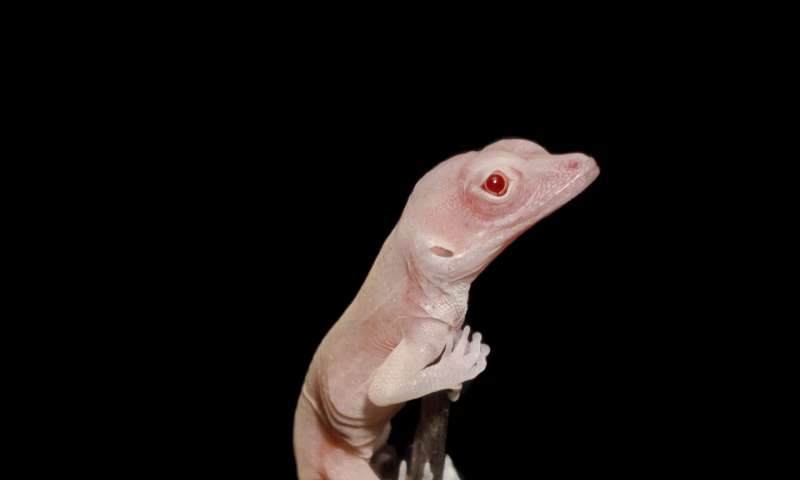Scientists decided to create albino anoles because removing the tyrosinase albinism gene would not be lethal to the reptile.
Scientists have created the first gene edited reptile, and it is an albino anole that was created using CRISPR-Cas9 gene-editing reagents, science speak for a method that enables scientists to edit the genomes of living organisms.

Doug Menke
Scientists decided to create albino anoles because removing the tyrosinase albinism gene would not be lethal to the reptile, and they are hoping to study how the loss of the tyrosinase albinism gene affects retina development.
The researchers published their paper August 27 in the journal Cell Reports. The gene editing of reptiles, and specifically lizards posed a challenge because lizards internally fertilize and the time of fertilization is cannot be predicted.
"For quite some time we've been wrestling with how to modify reptile genomes and manipulate genes in reptiles, but we've been stuck in the mode of how gene editing is being done in the major model systems," said Doug Menke, an associate professor at the University of Georgia and a co-author of the paper. "We wanted to explore anole lizards to study the evolution of gene regulation, since they've experienced a series of speciation events on Caribbean islands, much like Darwin's finches of the Galapagos."
Menke and his team found a way to perform gene editing on the alleles that were inherited or transferred from the mother anole. An allele is, according to the Oxford Dictionary, “one of two or more alternative forms of a gene that arise by mutation and are found at the same place on a chromosome.”
"Because we are injecting unfertilized eggs, we thought that we would only be able to perform gene editing on the alleles inherited from the mother. Paternal DNA isn't in these unfertilized oocytes," Menke said in a statement released by Cell Reports. "We had to wait three months for the lizards to hatch, so it's a bit like slow-motion gene editing. But it turns out that when we did this procedure, about half of the mutant lizards that we generated had gene-editing events on the maternal allele and the paternal allele."
This, Menke says, shows that the gene-editing reagents stay active for some time within the unfertilized eggs. The researchers screened the offspring and found that 6 to 9 percent of the egg cells produced offspring that retained gene editing events.
"Relative to the very established model systems that can have efficiencies up to 80% or higher, 6% seems low, but no one has been able to do these sorts of manipulations in any reptile before," Menke said. "There's not a large community of developmental geneticists that are studying reptiles, so we're hoping to tap into exciting functional biology that has been unexplored."
Menke and his researchers edited the genes of the anole to make the offspring albino, first to show that the editing can be done without killing the reptile, and second, because the researchers are hoping to use the albino lizards as a model to figure out how the loss of the tyrosinase albinism gene affects retina development.
The complete paper, CRISPR-Cas9 Gene Editing in Lizards through Microinjection can be read on the Cell Reports website.


